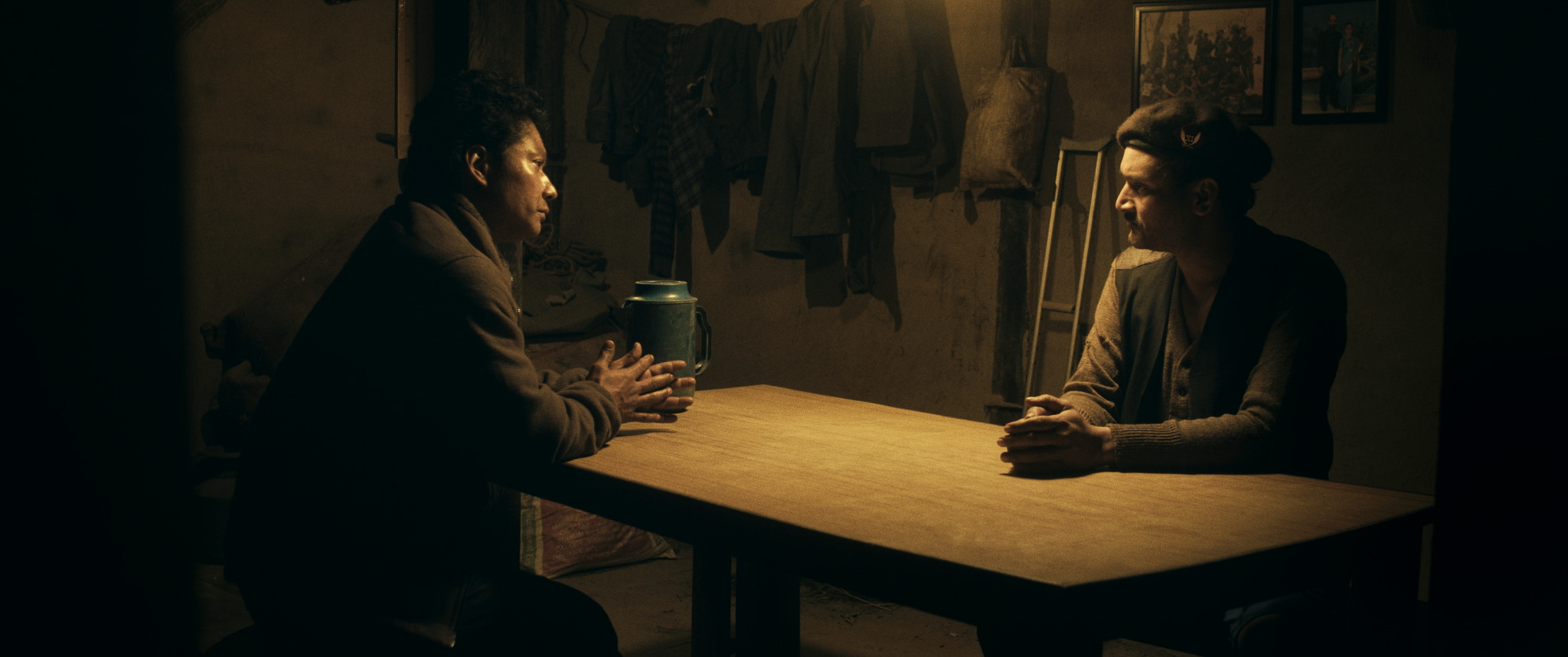In the realm of Nepali cinema, where mainstream offerings often prioritse commercial appeal over artistic exploration, The Red Suitcase emerges as a refreshing departure. The film emerges as a groundbreaking exploration of magical realism intertwined with the harsh realities of global migration. Directed by Fidel Devkota and featuring Bipin Karki, Saugat Malla, Shristi Shrestha, and Prabin Khatiwada, this film transcends traditional genre boundaries to deliver a cinematic experience that is both visually captivating and intellectually stimulating.
What sets The Red Suitcase apart is its meticulous attention to visual detail. It showcases remarkable craftsmanship, with impeccable colour grading heightening its visual allure. Each frame is scrupulously composed, inviting viewers into a world where every colour and shade contributes to the narrative’s emotional resonance. The result is a film that engages the senses and prompts rumination, compelling audiences to delve deeper into its thematic undercurrents. From the vibrant hue of Nepali landscapes to the sombre tones of urban decay, every scene is a masterclass in visual storytelling.
The deep reality

Central to the film’s narrative is its exploration of the human cost of governmental neglect, particularly in the context of foreign employment. Through the lens of Nepali workers in Gulf countries, The Red Suitcase exposes the harsh realities of economic migration, highlighting the systemic failures that perpetuate a cycle of exploitation and tragedy. It is a poignant commentary on the inherent inequalities of global capitalism and the profound impact of policies that prioritise profit over people. A red suitcase with the grim statistics of Nepali workers’ deaths occurred in Qatar; since 2010, the year Qatar was awarded the rights to host the World Cup, Nepal’s labour ministry has compiled data indicating that over 2,100 Nepali workers have tragically lost their lives in the country.
The red suitcase, a symbol of hope and possibility, becomes a vessel through which the film explores the complexities of human experience. Within its crimson confines lies the body of Dhan Bahadur BK, a fictional representation of the thousands of Nepali workers who have tragically lost their lives abroad. Their stories, categorised as “natural deaths” without further investigation, highlight the systemic injustices that plague the migrant labour system.
The Red Suitcase has its commitment to nuance and ambiguity; rather than spoon-feeding audiences with simplistic moralising, the film embraces complexity, presenting characters and situations that defy easy categorisation. This refusal to provide easy answers challenges viewers to confront uncomfortable truths and wrestle with the moral dilemmas inherent in the human experience.
As a viewer, I found myself drawn into the winding narrative of The Red Suitcase, eagerly unravelling its mysteries and interpreting its symbolism. Each scene is a puzzle piece, carefully crafted to contribute to the larger diversification of themes and designs that define the film’s identity. It is a cinematic experience that rewards patience and engagement, inviting viewers to participate actively in the storytelling process.
Indeed, The Red Suitcase is not merely a passive viewing experience: attempts an experimental approach that ultimately falls short. The slow pacing feels somehow forced, almost as if the actors are waiting for cues rather than naturally engaging with the dialogue. The storyline comes across as contrived and bordering on the absurd.
As we follow the characters’ journey, the red suitcase becomes a powerful symbol, carrying the weight of their emotions and experiences, while also serving as a mirror for our introversion. It’s a film that invites us to explore the depths of our souls and perceive the complexities of life itself.
Globally acclaimed
Despite facing challenges at the box office, The Red Suitcase has garnered widespread acclaim on the international stage. HBO Europe’s acquisition of the rights for its OTT platform signifies its potential to resonate with a global audience hungry for thought-provoking cinema. Moreover, director Devkota’s debut feature has been recognised with prestigious awards, including the Best Feature Film Award at selective film festivals. This marks the third Nepali film to reach the Venice Film Festival, following Kalo Pothi and Seto Surya— both of those films had foreign producers and cinematographers.
Devkota’s decision to bring this narrative to the Venice Film Festival marks a significant milestone for Nepali cinema. As the first film produced entirely by a domestic production group to be selected for the prestigious festival, The Red Suitcase shines a spotlight on the talent and creativity within Nepal’s film industry. With a cast featuring seasoned actors such as Saugat Malla, Bipin Karki, Prabin Khatiwada, and Shristi Shrestha, the film showcases the depth of talent present in the country.
In summary, The Red Suitcase serves as a testament to cinema’s ability to stimulate reflection, cultivate empathy, and ignite important conversations; it is a cinematic journey that demands introspection and contemplation. Regardless of encountering obstacles along its journey, the film undeniably influences viewers, leaving a lasting impression on the sphere of modern Nepali cinema.
The post Movie Review: Unpacking the depth of The Red Suitcase appeared first on OnlineKhabar English News.
Comments
Post a Comment